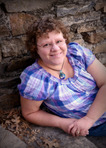Writing Speculative Fiction: Part V--World Building
I'm going to do a series of posts on speculative fiction for a class I'll be teaching at an upcoming writing conference. Hope you all will find some value here!
 I think we can safely define speculative fiction as fiction about the world as it isn't. As it might be. Not the world as it is. That makes world building so crucial. You want to create a setting that is believable, consistent, and so richly detailed that your readers will feel like they are actually there.
I think we can safely define speculative fiction as fiction about the world as it isn't. As it might be. Not the world as it is. That makes world building so crucial. You want to create a setting that is believable, consistent, and so richly detailed that your readers will feel like they are actually there.
You need to know the geography, the history, the culture, the customs, the rules that govern the technology or the magic. The symbols that speak to the people you have created. The way the air feels. The way it smells. The way the light falls. In other words, you need to create every detail for yourself so you know the world as well as you know the world you live in.
There are many different ways to go about creating your world. Draw maps, draw pictures, create models, write down descriptions... Really, anything you can think of. My favorite method is to daydream about the world, all the irrelevant bits that won't go into the story, until I feel like I know the place well enough. Use your imagination and have fun. This can be one of the most enjoyable parts of writing speculative fiction.
A word of caution, though. Readers don't need or want all the details that you have created. In fact, too much description of the world gets boring pretty fast. You have to pick and choose which details to include. Those which will drive the story along. Those which give the reader enough of a taste of the world that they'll be able to fill in the gaps with their own imaginations. Little details go a long way.
Really, I think world building is a large part of the appeal of speculative fiction. It's wonderful to be able to dwell for a while in a new or far-off place, or even somewhere close to our own world, but just different enough to give us a whole new perspective.
What are your favorite world building tricks?
Up next: Part VI--Conclusion
Read: Part I--What is Speculative Fiction
Read Part II--Difference Between Science Fiction and Fantasy
Read Part III--Rules for Writing Speculative Fiction
Read Part IV--Exposition

 I think we can safely define speculative fiction as fiction about the world as it isn't. As it might be. Not the world as it is. That makes world building so crucial. You want to create a setting that is believable, consistent, and so richly detailed that your readers will feel like they are actually there.
I think we can safely define speculative fiction as fiction about the world as it isn't. As it might be. Not the world as it is. That makes world building so crucial. You want to create a setting that is believable, consistent, and so richly detailed that your readers will feel like they are actually there.You need to know the geography, the history, the culture, the customs, the rules that govern the technology or the magic. The symbols that speak to the people you have created. The way the air feels. The way it smells. The way the light falls. In other words, you need to create every detail for yourself so you know the world as well as you know the world you live in.
There are many different ways to go about creating your world. Draw maps, draw pictures, create models, write down descriptions... Really, anything you can think of. My favorite method is to daydream about the world, all the irrelevant bits that won't go into the story, until I feel like I know the place well enough. Use your imagination and have fun. This can be one of the most enjoyable parts of writing speculative fiction.
A word of caution, though. Readers don't need or want all the details that you have created. In fact, too much description of the world gets boring pretty fast. You have to pick and choose which details to include. Those which will drive the story along. Those which give the reader enough of a taste of the world that they'll be able to fill in the gaps with their own imaginations. Little details go a long way.
Really, I think world building is a large part of the appeal of speculative fiction. It's wonderful to be able to dwell for a while in a new or far-off place, or even somewhere close to our own world, but just different enough to give us a whole new perspective.
What are your favorite world building tricks?
Up next: Part VI--Conclusion
Read: Part I--What is Speculative Fiction
Read Part II--Difference Between Science Fiction and Fantasy
Read Part III--Rules for Writing Speculative Fiction
Read Part IV--Exposition
Published on February 15, 2012 11:34
No comments have been added yet.



